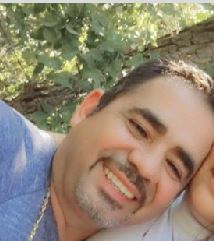UT Tyler School of Medicine facility construction underway
Published 5:45 am Friday, October 6, 2023

- Justin Crowe, center, one of the 40 inaugural students of UT Tyler School of Medicine, interacts with classmates during orientation week.
As work is underway to construct the UT Tyler School of Medicine facility, a foundation is also being laid for what leaders say will be a top-notch education system that allows for improved health in East Texas.
UT Tyler School of Medicine Founding Dean Dr. Brigham Willis has a vision for the school.
Trending
“We’re going to be the No. 1 rurally focused medical school in the country,” Willis said.
The $308 million Medical Education Building, which will house the med school, will be the first of its kind in Northeast Texas. Gov. Greg Abbott and other officials broke ground on the facility in January and construction work for the state-of-the-art facility has been well underway this fall.
At the center of the school of medicine’s mission is community and filling the health needs of East Texas, Willis said. Some of the needs in the region are pediatrics, OB-GYN, preventative medicine, family medicine, behavioral health, and more, according to Willis.
“I think maintaining our focus on our mission is one of the things that I want to be really strong about [and] making sure we’re as community embedded,” Willis said. “Where everything we do is a part of the community and not losing that focus and also making sure that we know that we’re a med school for all of East Texas, not Tyler.”
Willis noted the amount of healthcare professionals available in more rural areas is different than those available inside Tyler city limits, for example. He said the school aims to expand programming across the region to fill the needs of all.
A 2022 health study published earlier this year shows the gaps in pediatric care in the region. There are 0 pediatricians in 26 out of 38 counties in East Texas. The study also showed there is a high rate of child mortality in Northeast Texas than both national and state averages, according to Willis. This is due to the lack of access to care and resources in the region, Willis explained.
Trending
In Northeast Texas, the mortality of pediatric patients is nearly 2.5 times higher than the national average, according to the study.
“Children are the future of our community, and it is alarming to see the significant pediatric health issues present in Northeast Texas,” said Dr. Valerie B. Smith, Smith County Local Health Authority and UT Tyler’s School of Medicine Assistant Professor of Pediatrics. “This report shows the urgent need to address the critical pediatric health care shortages in our region. We must work together to improve the health outcomes for our children and ensure they can thrive.”
According to the Pediatric Health Status Report:
Northeast Texas had higher rates of children living in poverty and food insecurity, preterm births and teen births than both the state and national averages.
Northeast Texas children are more than twice as likely to be uninsured as their national counterparts.
Twenty-four counties don’t have a board-certified pediatrician, which means that over 105,000 children in the region don’t have access to a pediatrician in their county.
In the entire 42-county region, there are no pediatric intensive care beds. Because of these shortages, families often must seek care far from home, meaning 58.4% of Northeast Texas pediatric patients have to drive more than 80 miles to receive specialty pediatric care, according to the study.
In 2022, according to data from UT Health East Texas and CHRISTUS Trinity Mother Frances in Tyler, these hospitals transferred 938 children to hospitals outside of the region because they lacked either the necessary subspecialist, intensive care or monitoring capabilities.
“The pediatric shortages, especially the shortages of subspecialists, in Northeast Texas are deeply concerning. Now more than ever, it is vital that we begin to plan on how we are going to address pediatric care,” Willis said. “The University of Texas at Tyler School of Medicine is committed to addressing this critical issue by providing high-quality medical education to prepare our students to be the future pediatricians and subspecialists of East Texas.”
To help fill healthcare needs in East Texas, one goal is to expand residency programs. A few years ago the GME program had three practices but now has grown to 18, Willis said. Some programs in the works are a new family residence program, pediatrics in Jacksonville along with programs in ER, anesthesia, hospice, cardiology and palliative care, In addition, UT started a new pulmonary critical care fellowship. They also have an Early Assurance Program with local East Texas universities where they get early admission and MCAT prep.
“We’re focusing really strongly on expanding research,” Willis said. “We’re trying to double our research footprint as well. So building facilities and renovating and recruiting faculty — you have to be creative to solve these health issues in East Texas.”
‘Serve their region’
When looking at the 4,000 applications for the inaugural class for the school of medicine, Willis specifically picked students from East Texas or with connections to East Texas. So far, there have been 6,000 applicants for the second class.
“We also selected on mission alignment: how much service do they do, how much leadership, their humanism, their ethics and those kinds of things,” Willis said. “And if you look at the students, we’ve got really amazing people.”
Of the inaugural class, 95% are from East Texas and 5% have family or connections in the region and intend to practice in the area. The inaugural class is made of people from all around East Texas including Longview, Hallsville, Tyler and Nacogdoches. The students come from various counties including Kaufman, Bowie, Henderson, Gregg, Harrison, Angelina and San Jacinto.
Additionally, 42.5% are the first generation in their family to attend graduate school, 57.5% have an income less than $100,000, 30% have an income less than $50,000, 22.5% assisted in raising other children in their family, 12.5% contributed family income, 30% were on free or reduced lunch and 27.5% were the first generation of their family to pursue their undergraduate degree.
“One thing that has stood out to me across a number of students is their gratitude, to be able to serve their region, where they’re from,” Willis said. “A significant number of students told me that they wouldn’t be able to go to med school anywhere else because they have to be here for their family or their community.”
Now, a few months in, the inaugural class has adjusted well. They all passed their first tests and are EMT trained, Willis said. During orientation they had a volunteer day. They also have houses, similar to those in “Harry Potter,” in which each house is designed to foster authentic relationships and support through socials, wellness initiatives and community service.
“A big one for me is getting our students and residents and faculty as engaged with as many community organizations and across the community as possible to make sure it’s known that we are part of it and not just in a ivory tower walled off,” Willis said.
In the next five to 10 years, Willis hopes to double the class size to 80. Currently they have preliminary accreditation and are aiming to receive temporary accreditation in 2025 and get full accreditation in the future. They are working on their strategic plan and continuing to add faculty, he said.
“Our mission is to produce physicians who are dedicated to East Texas, are going to stay here and practice to improve health outcomes,” Willis said. “To do that … the best way is to recruit people who are from here. We’re committed to finding those who understand their communities and want to make a difference.”
The Medical Education Building is expected to be completed in March 2025.






